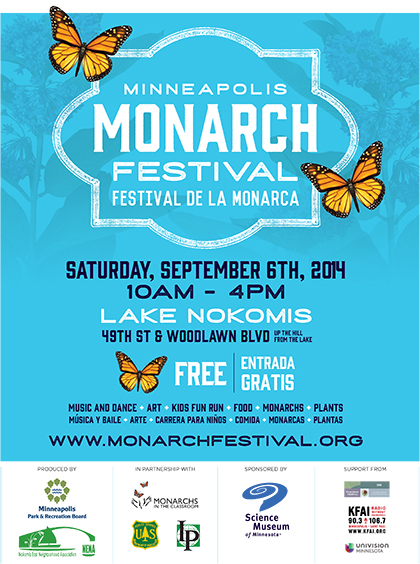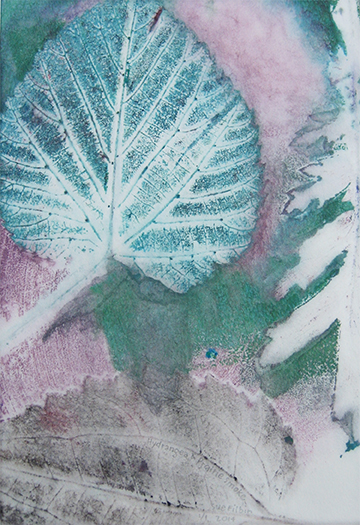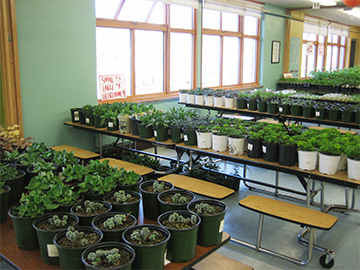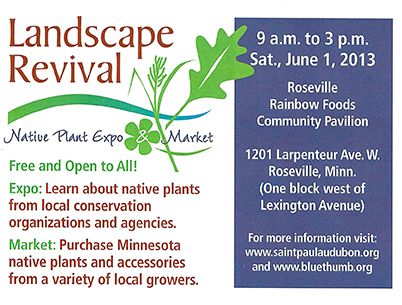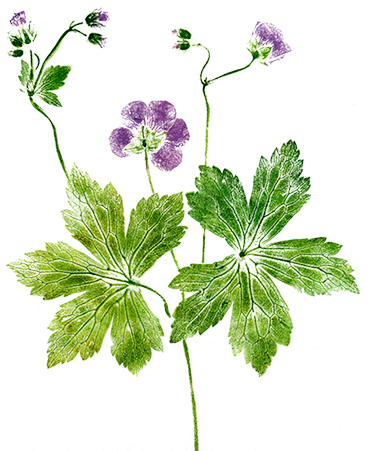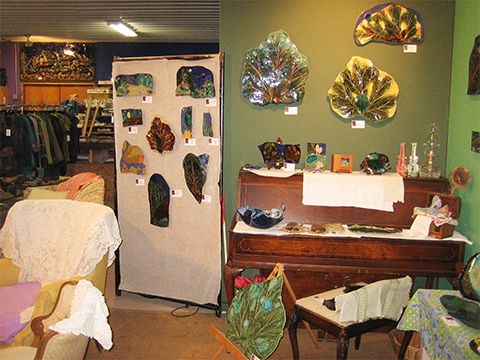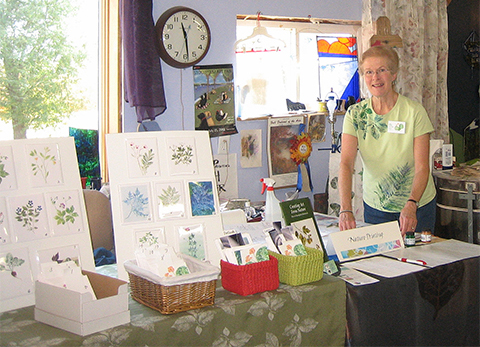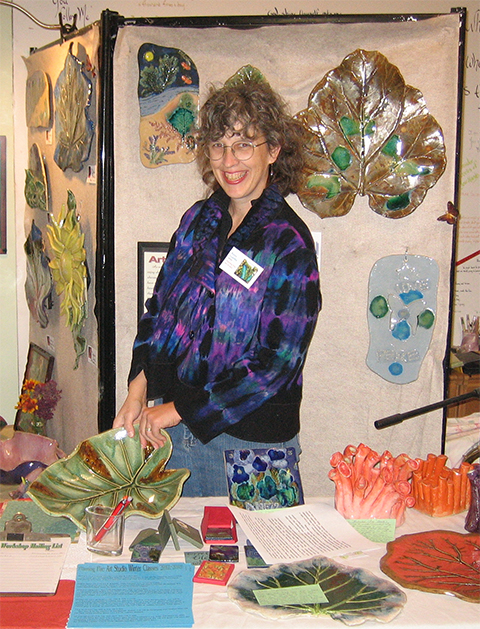I had such fun demonstrating nature printing last night during an open house at what will become, following renovations, the new permanent home for the White Bear Center for the Arts (WBCA). http://whitebeararts.org/ The staff, board of directors, volunteers, members, and community are collaborating with great vision, energy, and generosity to enable more people to “…celebrate the joys of art”—one of the goals of WBCA.
Guests were so interested in the shapes and patterns that were created by the inked leaves, observing beauty they hadn’t really seen before. Danielle Cézanne, WBCA education director, and I hope to offer a nature printing class in winter or spring 2012, so please watch class listings.
The Nature Printing Society (NPS) http://www.natureprintingsociety.info/ is the best source for information about printing plants, and fish, shells, insects, and many other natural specimens. And the book I recommend was co-authored by my teacher, Sonja Larsen, and John Doughty, both of whom are lifetime members of the NPS. http://www.natureprintingbook.com/
In response to the terrific questions that were raised in our conversations last night, a few responses are below.
Yes, I make numerous prints from the same leaf—until I’m no longer happy with the prints. Some leaves are tender; many are quite durable, particularly tree leaves.
The supplies used in the demo were all from Wet Paint, where I purchase all of my supplies, which, by the way are minimal and affordable. http://www.wetpaintart.com/
• Speedball water-soluble block printing inks (You may also use oil-based inks or paints. Oil-based media can be cleaned with vegetable oil rather than solvents.)
• Speedball soft-rubber brayer (used to apply ink to the leaf)
• Paper: Sumi-E from a pad or Masa that comes in a flat sheet measuring 21×31 inches (dampen the paper and print on the top, or smoother side, of the sheet)
• Freezer paper, or a piece of quilter’s mylar (12×18 inches from Joann), Plexiglas, or window glass for a palette
I will be demonstrating nature printing the weekend of Oct. 7-9, 2011, as a guest artist at site #12 at the Fresh Art tour in colorful, scenic western Wisconsin where leaf color will be glorious. I hope to see you there! http://www.freshart.org/

Printing a maple leaf
